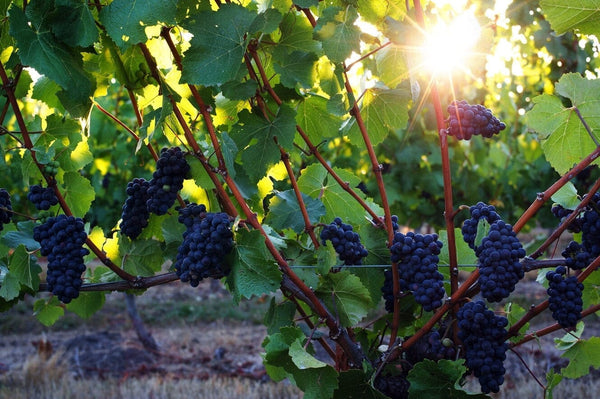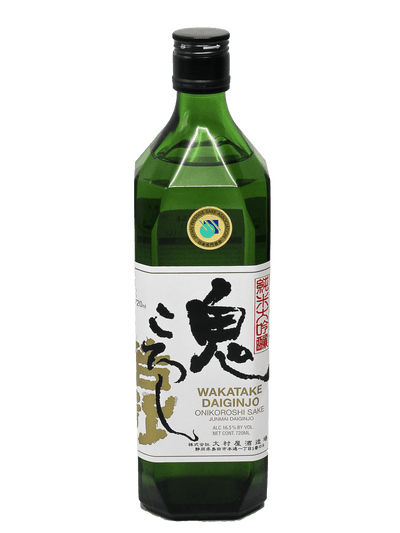Pinot Noir from Marlborough: New Zealand’s Shining Star

New Zealand Sauvignon Blanc has grown in renown since the early 2000s, particularly for its distinctive flavor and aroma profile, crisp acidity, and fermentation without oak. There has always been, however, a remarkable first cousin in that country’s wine production: Pinot Noir. In particular, the Pinot Noir red wine of Marlborough deserves attention, so it’s worth digging deeper into this category the next time you buy wine online.
Pinot Noir Around the World
The red wine made with this variety have achieved great popularity among those who like good wine, and that is why during the last 40 years new regions have emerged dedicated to its production.
Although France is known as the motherland of Pinot Noir—specifically the Bourgogne region, where the world's most famous and expensive wines are made—other countries also stand out for making wines with this variety, such as the United States, Germany, Italy, and New Zealand. In France it is usually called just Pinot, while in Germany it is known by the name of Spätburgunder and in Italy by that of Pinot Nero.
The wine production with this grape causes more discussion and controversy than any other, mainly when describing its true expression in the different terroirs where it is cultivated and taken to its final product in the bottle. For example, we can notice a big difference between a wine produced in Côte de Nuits (Bourgogne) and one made in the Russian River Valley (California). This diversity of styles and ways of expressing oneself makes it a center of worship for lovers of this drink.
Thus, the world has discovered a type of wine that can satisfy different palates and becomes more versatile when it comes to accompanying a meal in a restaurant or at home. To get an idea of this versatility, some are fruitier and more full-bodied, others more elegant and finer.
As international production has soared, apart from the classic producing countries, new appellations have emerged in recent years both in Oregon and on the other side of the world, Australia, where exports of pinot noir wines increased by 105% in 2015-2016. Unlike others in the New World, the wines from these regions are lighter and more fragrant.
Today, vineyards planted with pinot noir have increased in the Old World. Growth has been seen in both quantity and quality in regions and countries such as Ahr (Germany), Alsace (France) and Alto Adige and Lombardy (Italy). Likewise, other regions specializing in sparkling wines have planted more pinot noir to give their wines a more "champenoise" style.
The numbers prove it: Pinot Noir has climbed to 10th place among all the most planted varieties in the world. For red varieties, only Cabernet Sauvignon, Merlot, Tempranillo, Syrah, and Garnacha Tinta precede it.
New Zealand Pinot Noir
Considering the first commercial bottling of Pinot Noir in the country occurred in 1987, the popularity of New Zealand Pinot Noir has grown like gangbusters. According to New Zealand Wine, it “has seen impressive growth in export sales in the last five years, with 10,282 million liters exported in the 12 months to June year-end 2020.”
In New Zealand, new wines from territories that were not as well known before, such as Central Otago, Martinborough, North Canterbury and Marlborough, have appeared on the market. In Martinborough, specifically, the pinots have a tendency to have earthy notes, which are attributed to the age of the vines, since they do not produce much and the fruit is concentrated, giving the wines greater complexity.
The Marlborough Wine Region
Marlborough stands out as one of New Zealand’s sunniest and driest regions. The Maori refer to the Wairau Valley as “Kei puta te Wairau,” or “The place with the hole in the cloud.”
It has three subregions for wine: the Southern Valleys, Wairau Valley, and Awatere Valley. The Southern Valleys feature a diversified terrain, but tend to have clay in the soils, also becoming cooler but sunnier towards the south. This is one to watch for estate grown Pinot. The Southern Valleys region tends to produce fuller-bodied wines. Wairau Valley is also diverse, often with gravel soils from ancient rivers. The Awatere Valley moves inland from the sea and gains elevation approaching the Kaikoura ranges. It’s cooler, drier, and windier too, often with higher vineyard sites. This results in lower yields. The region produces “bright, aromatic Pinot Noir and dramatic, distinctive Sauvignons,” according to New Zealand Wine.
What do Marlborough Pinot Noirs taste like?
Most are fermented in stainless steel, with careful temperature control. They feature a range of red fruit aromas and bright raspberry, plums, and cherries on the palate. Balanced acidity project freshness complemented by a linear structure and, in many cases, tannin backbone. The tannins are not overwhelming, though.
3 Must Try Marlborough Pinot Noirs at Bottle Barn
Your favorite wine store California has lots of New Zealand wines to choose from.
Consider the sustainably produced 2017 Framingham Nobody's Hero Pinot Noir, with bright cherry aromas complimenting baking spices and violets. It displays a certain savory earthiness. This features oak ageing. Or there’s the 2017 Spy Valley Marlborough Pinot Noir. The winemaker says it features “delicate aromas of maraschino cherry and cloves with an overlay of spice. The palate is fresh and vibrant with hints of vanilla and spice and a long lingering finish.” Finally, a tremendous value at $16.49, the 2019 Clos Henri Petit Clos Pinot Noir is the result of biodynamic production methods. In granting this red wine 94 points, Wine Enthusiast said: “The wine is the color of freshly squeezed cherry juice, and the vibrant nose offers oodles of plump summer berries just off the bush, along with stalky, floral undertones. The palate is equally exuberant, the juicy fruit wound by firm, textural tannins.” What more could you ask for in Pinot Noir?


















Leave a comment